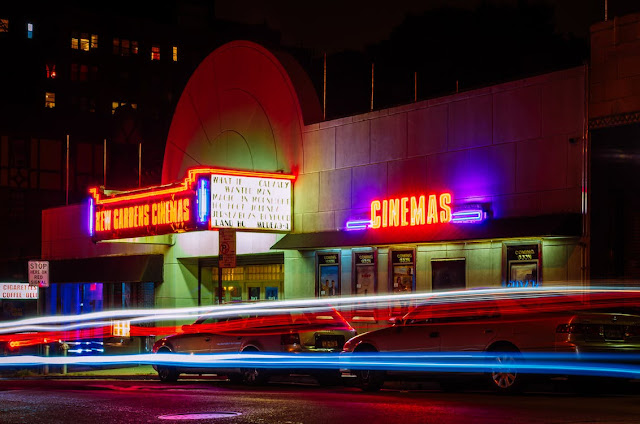![]() The origins of the movie theatre can be traced back to the late 19th and early 20th centuries when the motion picture industry was in its infancy. Before the advent of dedicated movie theatres, early motion pictures were often shown in various venues and settings. Let's explore the key milestones in the evolution of movie theatres:
The origins of the movie theatre can be traced back to the late 19th and early 20th centuries when the motion picture industry was in its infancy. Before the advent of dedicated movie theatres, early motion pictures were often shown in various venues and settings. Let's explore the key milestones in the evolution of movie theatres:
Predecessors to Movie Theatres: In the late 19th century, motion pictures were first exhibited as short films in traveling shows and vaudeville theatres. These short films, known as "kinetoscopes" or "peep shows," were shown to small groups of people who would watch the moving images through a peephole. Thomas Edison's kinetoscope was one of the earliest devices used for this purpose.
Nickelodeons: Around 1905, the concept of the nickelodeon emerged, which marked the true beginning of movie theatres as we know them today. Nickelodeons were small storefront theatres that charged a nickel (five cents) for admission. They featured continuous showings of short films, often accompanied by live music or narration. The term "nickelodeon" is a combination of "nickel" and the Greek word "odeion," meaning roofed-over theatre.
Rise of Purpose-Built Theatres: As the popularity of motion pictures grew, purpose-built theatres began to emerge. These theatres were designed specifically for showing films and offered better seating, projection equipment, and more comfortable surroundings than the makeshift nickelodeons.
The Roxy Theatre: In 1927, the Roxy Theatre, located in New York City, was one of the first grand movie palaces. It could seat over 6,000 people and was equipped with state-of-the-art technology for its time. The Roxy Theatre became a model for subsequent large-scale movie theatres.
Sound Revolution: The introduction of synchronized sound in the late 1920s with films like "The Jazz Singer" revolutionized the movie industry. The transition from silent films to "talkies" increased the appeal of movie theatres as audiences flocked to see and hear the latest innovations in entertainment.
Multiplexes and Modern Era: In the latter half of the 20th century, the concept of multiplexes took hold. These were theatres with multiple screens, allowing moviegoers to choose from several films showing simultaneously. The introduction of new technologies, such as digital projection and surround sound, further enhanced the cinematic experience.
Home Entertainment and Streaming: In recent decades, the rise of home entertainment systems, DVDs, and online streaming platforms has posed challenges to traditional movie theatres. However, the allure of the big screen, communal experience, and blockbuster releases continue to draw audiences to movie theatres worldwide.
Overall, the movie theatre has evolved from small nickelodeons to state-of-the-art multiplexes, providing audiences with diverse film experiences throughout its history. Despite the challenges posed by changing technologies, movie theatres remain an integral part of global entertainment culture.


No comments:
Post a Comment